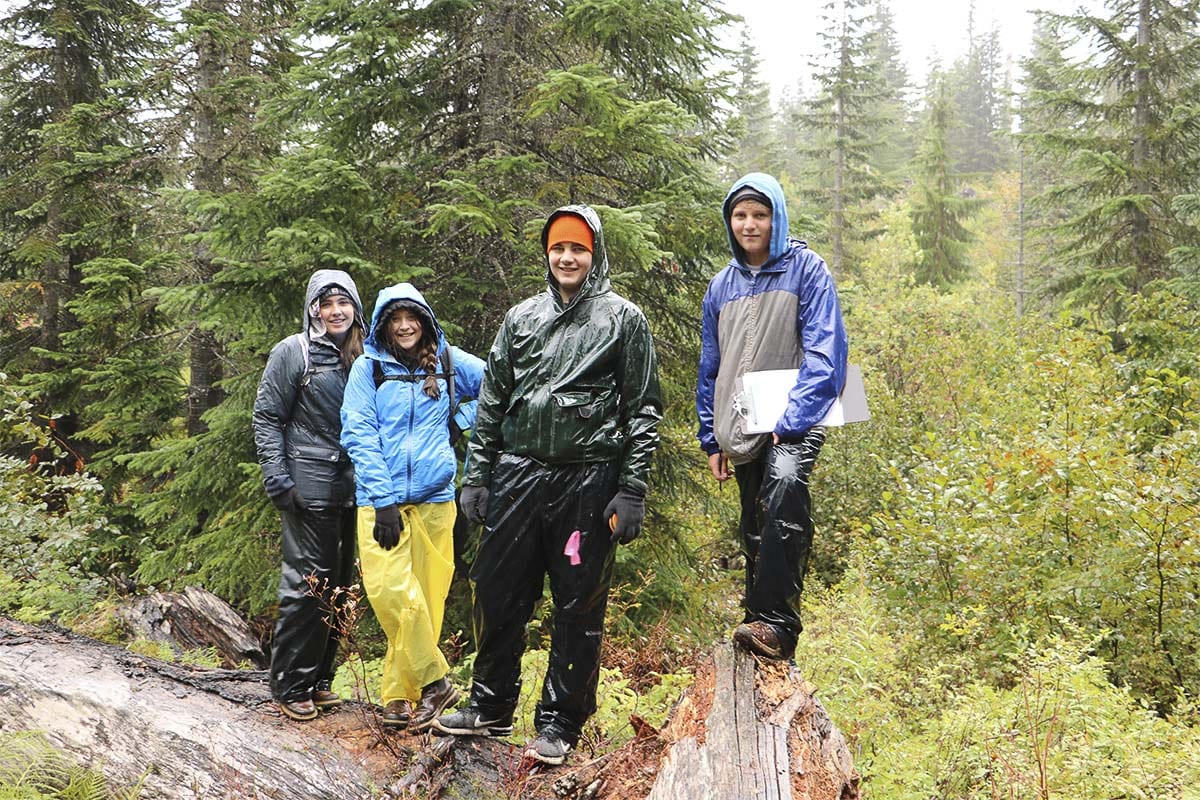Scientists use the data in an ongoing research study to monitor how various plant species are recovering from the blast
BATTLE GROUND — It’s been nearly four decades since Mount St. Helens violently erupted on May 18, 1980, sending a massive plume of ash 80,000 feet into the atmosphere. The ensuing landslide transformed the landscape, reducing hundreds of square miles around the mountain to a wasteland. Today, thanks to a partnership with the Mount St. Helens Institute, the eruption continues to transform learning opportunities for high school students in Battle Ground Public Schools’ STEM program.

Each year, 10th grade Environmental Science students from Battle Ground’s Center for Agriculture, Science and Environmental Education (CASEE) program venture up to the volcano for an overnight field trip of in-depth data collection. It’s not just an academic exercise — scientists use the data in an ongoing research study to monitor how various plant species are recovering from the blast.
“This project is as real as it gets for a science student,” said Andrea Parker, science specialist and teacher on special assignment (TOSA) for Battle Ground Public Schools. “You can present information in a classroom or look up images online, but until they’re out in the field with their rain gear on, tools in hand, and hiking to the site of the actual eruption, it just doesn’t mean the same thing for teaching students what it’s like to be a scientist.”
High school students in the CASEE program spend half of their school day on the program’s campus, where they study a science-based curriculum immersed in biology, wildlife, forestry, natural resources, and other topics depending on their grade level, together with English, and then attend their home high school for the other half of the day. The CASEE program started in 1993 as a cooperative between the horticulture and science programs at the district’s high schools, and supports STEM (science, technology, engineering, and math) education across the district by bringing Battle Ground school children to CASEE for educational field trips.

“It’s very different doing hands-on work compared to being in the classroom,” said Andrew Tawwater, a sophomore who attends CASEE and Battle Ground High School. “Working directly with the plants and soils we’re studying while filling our worksheets with data is a more effective way to grasp the concepts we’ve been learning about in the classroom. I signed up for CASEE because it seemed like a fun, focused program with more individualized attention, and it hasn’t disappointed.”
On Mount St. Helens, rain gear certainly was a key piece of equipment for the students, as the skies opened up and it rained steadily throughout the second day of the two-day trip. The wet weather didn’t dampen the spirits of the 26 students who made the trip, though.
“For me, one of the highlights was watching the kids take this project so seriously,” Parker said. “Even though they were getting drenched, the students never complained and saw their projects through to the very end, making sure they accurately collected all the data they needed.”
It wasn’t all grey skies and soggy clothes, though. The 10th graders spent the first day of their trip exploring the mountain under mostly sunny skies. On day one, the students and their chaperones hiked to Spirit Lake and explored the Ape Cave and Lava Canyon, mixing in geology lessons and a writing activity along the way. The group camped overnight and performed their data collection field work on the second day of the trip before returning to CASEE.
Back in the CASEE classrooms, students analyze differences in how the environment has recovered from the eruption across disturbance zones and land management strategies. Armed with their trove of data, the students will develop and finalize a research question based on their findings, and the project culminates with the students creating presentations.
“The MSHI STEM Ecology program has been a great opportunity for students to learn and apply disturbance ecology and scientific methods firsthand,” said CASEE instructor Irene Catlin. “It promotes high-level thinking, problem solving, and teamwork, and is highly engaging. Students become immersed in their surroundings through direct observation and data collection. Rich experiences like this are extremely memorable, and it helps students truly connect what they learn to the real world.”
The Mount St. Helens Institute (MSHI) is a nonprofit organization that provides educational programming to enrich visitors’ appreciation and understanding of the Pacific Northwest’s youngest and most active volcano.
“Our mission is to inspire transformative learning experiences around Mount St. Helens,” said Gina Roberti, Science Education coordinator for the Mount St. Helens Institute. “We bring these high school students out here so they can use the same practices and analyze data in the same way scientists do. The students get to see how the same practices and protocols for measuring different species, abundances, and soil sample collections can vary across many different subsets as they explore different sites.”
Information provided by Battle Ground Public Schools.




